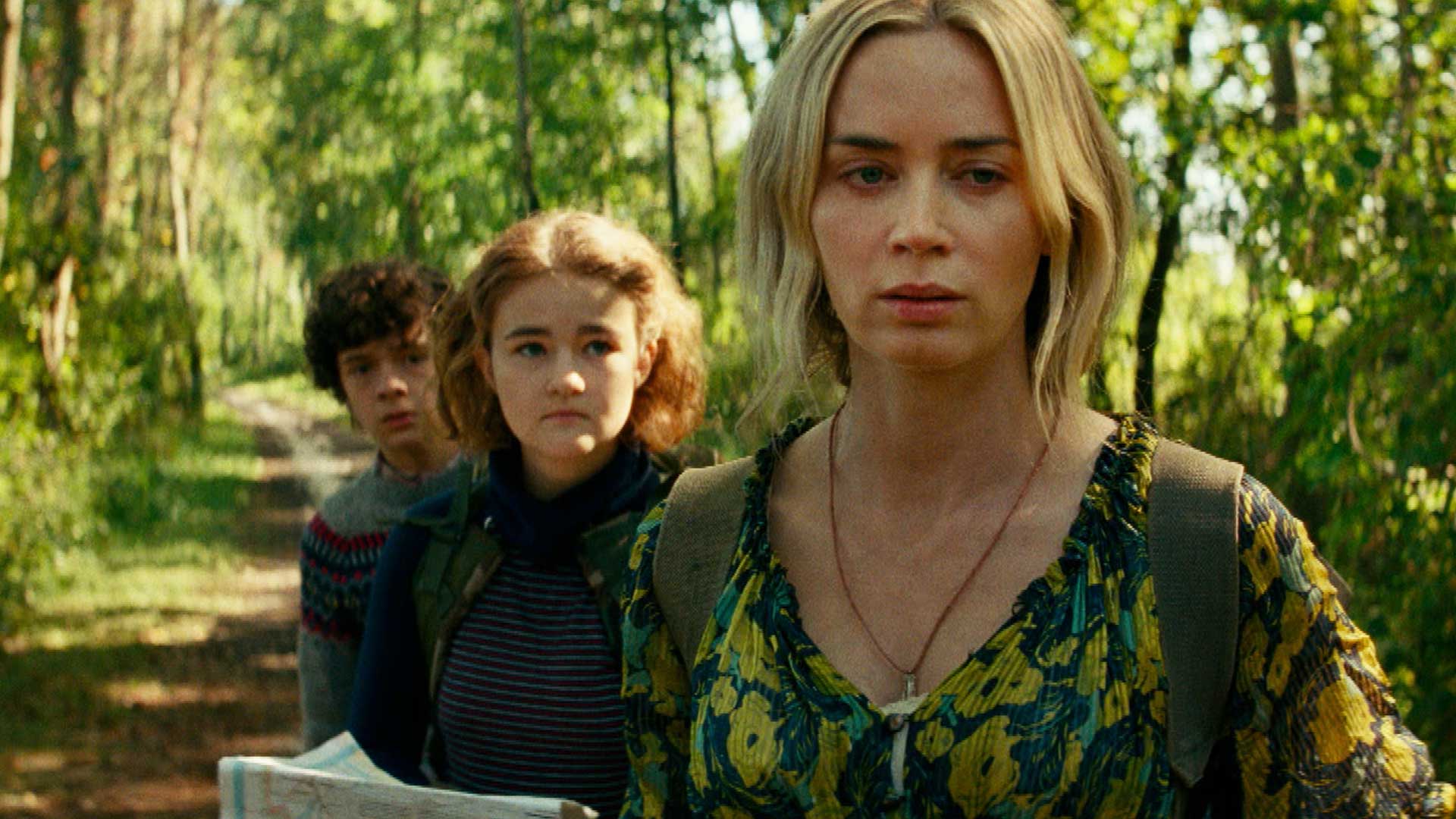Since the opening scene of Jaws, many blockbuster filmmakers have strived to riff on Steven Spielberg’s particular four-quadrant brand of graceful thrills and grounded emotion. Utilizing the fundamental calling cards of that director in 2018, John Krasinski’s A Quiet Place was a passable imitation with bludgeoning sound design to keep one’s mind off certain dubious narrative decisions. Successful enough to quickly earn a sequel, A Quiet Place Part II has now arrived after a year-long pandemic delay, adding a few new characters but upping the scope only slightly. It’s another unsparing sensory experience, seeking to amp up tension with every sound (or not) that’s being made. The approach is effective in a handful of moments that rely on jolting jump scares, but with a mix of bewildering character decisions and contrived plotting that banks on cheap tricks, any interest in this expanding universe dissipates by the film’s final moments.
The compelling flashback prologue––set on “Day 1”––allows Krasinski to briefly return to the screen as Lee Abbott, who was ravaged by an alien in the finale of the first film. Conjuring up a more awe-inspiring visual than anything to follow, we witness Marcus Abbott (Noah Jupe) up at bat at his local baseball game as the aliens first touch down. Chaos quickly ensues as we’re re-introduced to Krasinski orchestrating the strings for maximum impact; the assured oners as he cuts out the sound at the most opportune moments timed with the perspective of the deaf Regan Abbott (Millicent Simmonds). The proceedings then pick up on “Day 474” where the first film concluded: the Abbott family, less the recently-departed Lee but now plus a newborn, have figured out the Achilles’ heels of the aliens and are leaving their home behind. Equipped with a radio to amplify the feedback noise to ward off aliens, guns, and a box to put their baby in (featuring a breathing tube connected to oxygen, when the inevitable cries come) they seek nearby signs of human life.
Written solely by Krasinski this time around, the most notable new player is the scruffy, grizzled Emmett (Cillian Murphy), a former town acquaintance of the Abbotts who now lives a solitary existence of survival after experiencing his own loss. When the aliens pursue their victims, the safest space he’s found is in a sound-proof chamber and he’s sussed out the exact amount of time before one’s oxygen is depleted. His introduction also establishes the first of many poorly thought-out character choices: why would he use noisy cans for trespassers that alert both him and, subsequently, the aliens? Considering he already has sights on the Abbott family as they approach, one would imagine he’d not want to attract the aliens, even if he is trepidatious when it comes to trusting anyone. Krasinski is clearly going for non-stop thrills, yet these kinds of decisions are more frustrating than forgivable and no amount of ferocious, attention-grabbing sound design can fully cover them up as they compound. Whereas the first film mostly lets the aliens hide in the shadows, adding a sense of lurking danger, they are much more out in the open in this outing from the get-go, resulting in a monotonous feel to each set piece.
Absent the aforementioned grace and emotional texture of Spielberg’s finest work, Krasinski seems solely invested in emulating the director’s technical craft, none more so than in two separate sequences of cross-cutting. These sections are clearly meant to dazzle yet come off feeling contrived than anything else. While they provide notable moments for Simmonds (and Jupe by extension, though his character is saddled with some of the worst decision-making), one imagines greater tension would be wrought if the connections between these parallel scenes didn’t feel so hastily calculated. Though, when everything is a high-wire act built on rash decisions, it leaves little room to feel for this family––particularly when the film’s main arc is meant to be about children growing up and making their own way in life. In this regard, Simmonds is a stand-out with an expanded role from the original, her character given newfound agency as she desperately tries to find a promising future for her family. As a new father figure of sorts, Murphy impresses with a simmering intensity, while a late-stage appearance by Djimon Hounsou unfortunately leaves much to be desired.
In a Hollywood where sequels are mandated to go bigger and expand the I.P. to chase the dollar signs of a cinematic universe, on paper, it is refreshing that Krasinski decided to stay relatively small-scale with the sequel. Yet, in carrying over the narrow scope, the narrative hang-ups of the first outing are only expounded upon here with a rinse-and-repeat blueprint to the stakes that feels all-too-repetitive. Considering the resources at Krasinski’s disposal to do something genuinely exciting, it’s disappointing to see the lessons that went unlearned as the same tricks get duplicated.
A Quiet Place Part II opens in theaters on May 28.

